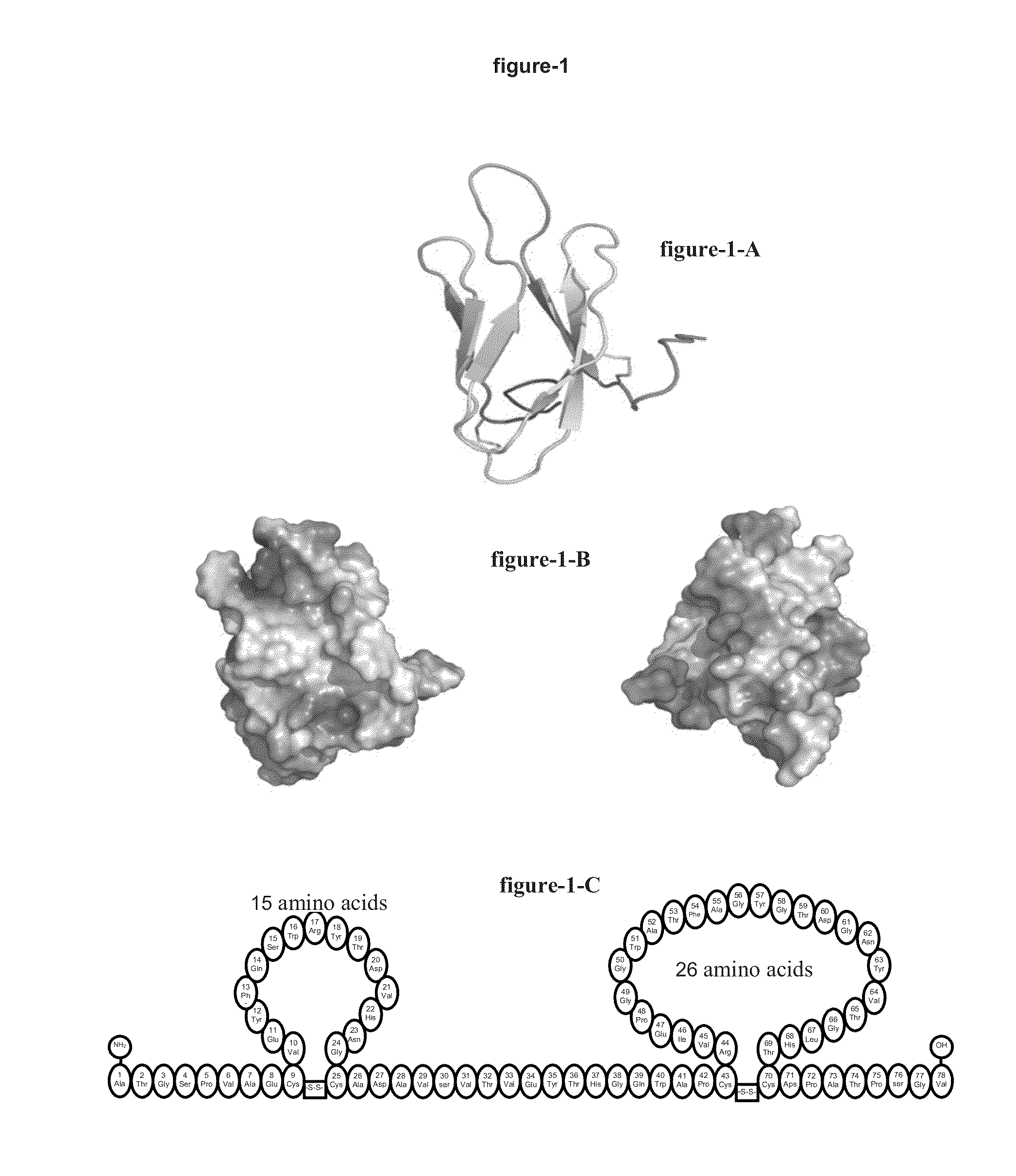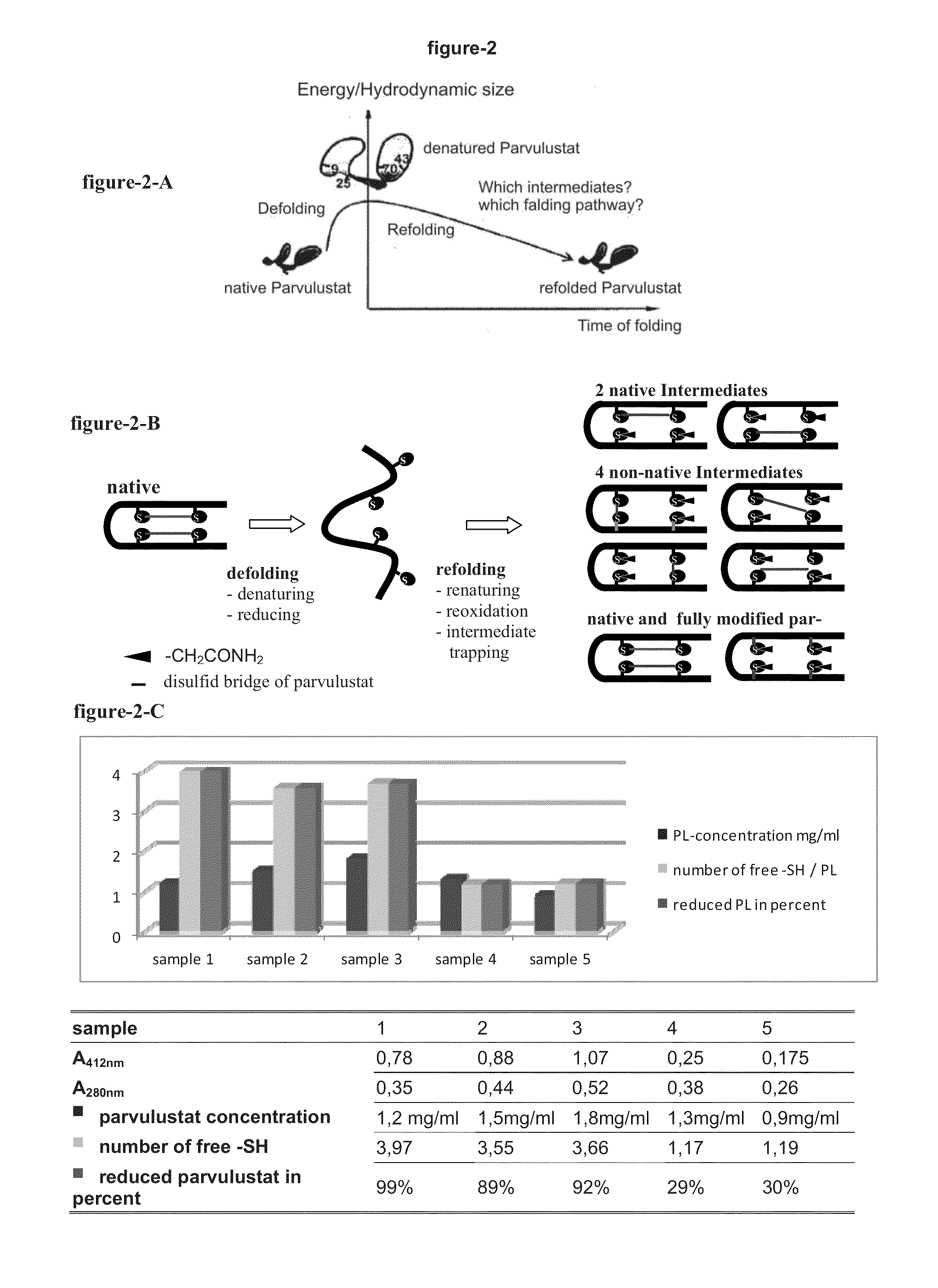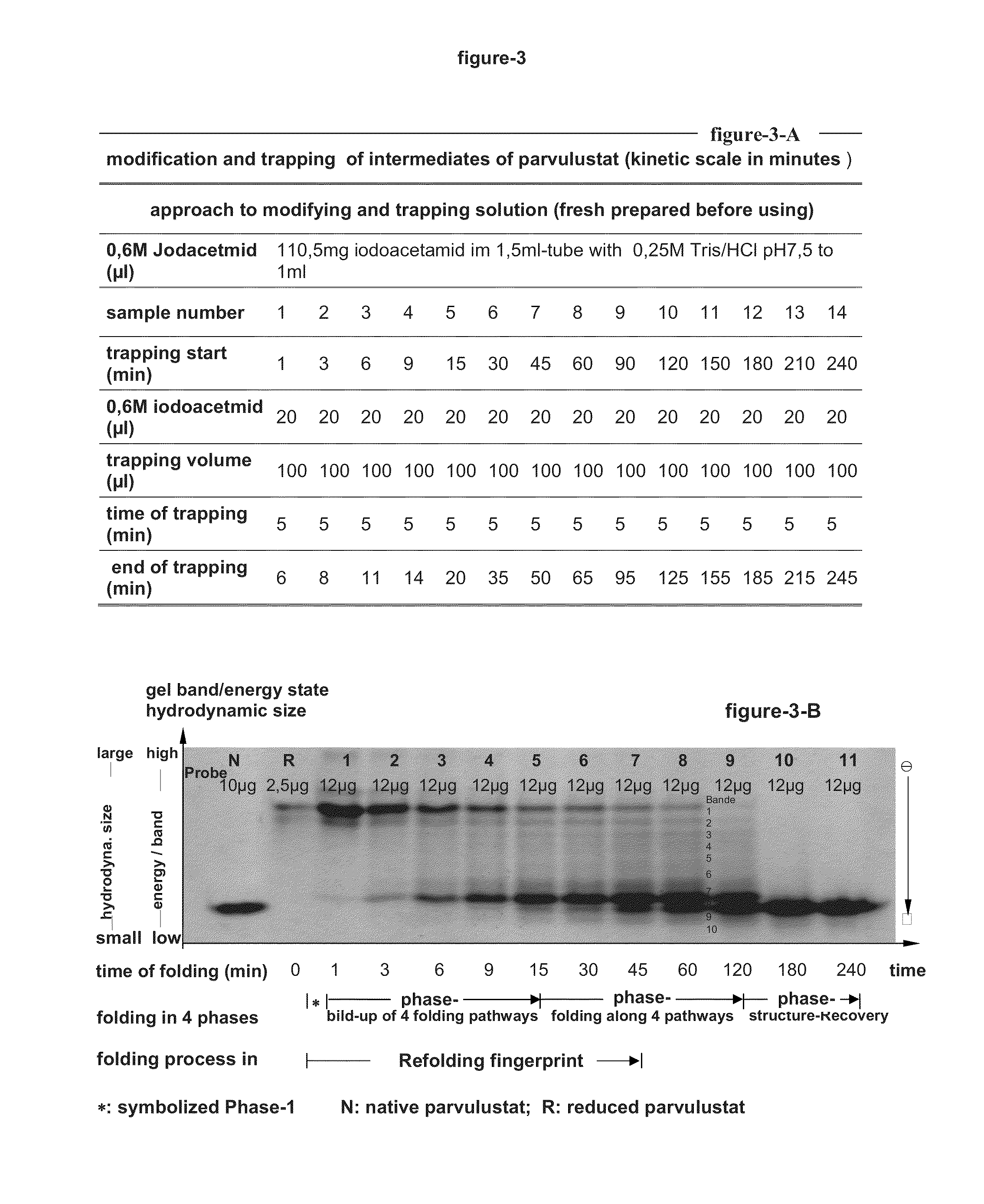Novel method for characterizing and multi-dimensionally representing the folding process of proteins
- Summary
- Abstract
- Description
- Claims
- Application Information
AI Technical Summary
Benefits of technology
Problems solved by technology
Method used
Image
Examples
embodiments
[0331]The present invention will now be illustrated by the following examples. These serve to illustrate certain preferred embodiments and aspects of the present invention, but are not be interpreted as the limiting scope thereof.
[0332]The embodiment relates to the characterization of the folding process of the overexpressed [alpha]-amylase inhibitor Parvulustat (Z-2685) from Streptomyces parvulus FH-1641 in Streptomyces lividans TK24. Parvulustat is due to its clearly defined pharmakophor structure, irreversible binding to the enzyme and low dissociation constant of 2.8×10−11 M / L is a effective inhibitor of [alpha]-amylase, which reduces and slow down the uptake of glucose by the intestines into the blood and thus it is a potential antidiabetic agent for diabetes type II. Its three-dimensional structure has been elucidated by NMR analysis (Rehm et al, 2009; Pdb 2KER). The characterization of the folding process of Parvulustats for its biotechnological production and exploration of ...
example 1
[0333]Analysis of the structural and physicochemical properties of the Parvulustats. Parvulustat (FIG. 1-A) consists of 78 amino acids with a molecular weight of 8282.09 Da. Its amino acid sequence is
ATGSPVAECVEYFQSWRYTDVHNGCADAVSVTVEYTHGQWAPCRVIEPGGWATFAGYGTDGNYVTGLHTCDPATPSGV.
[0334]It has 4 cysteine residues, 5 prolines, 2 arginines, three tryptophans, 5 tyrosines, 2 phenylalanines, 3-sheets, 6-turns and two loop structures as a result of the two disulfide bridges, which each of them through thiols of cysteins 9-, -25 and -43, -70 are bound (FIG. 1C). It has 8 negative and 2 positively charged residues from 4 aspartic acids, 4 glutamic acids and 2 arginines. Its -amylase inhibitory activity centre in the triad Trp16 Arg17 Tyr18 as the pharmacophore is located at the -turn of the -sheet structure in the first loop structure. Its isoelectric point is 4.3. At pH 7.0 it is loaded from 5.9 net negative charges. The ratio between the hydrophilic and hydrophobic residues is 1:3. Its mole...
example 2
Optimal Separation of the Unfolded Protein Sample with Maximized Hydrodynamic Sizes
[0337]Parvulustat was completely denatured, reduced and released of reducing agent.
[0338]Thereby the fraction of the optimal unfolded Parvulustat which has a maximum hydrodynamic size and its disulfide bonds were completely reduced to free thiol groups, were separated by liquid chromatography and prepared for re-oxidation and the dynamic modification in the next steps.
[0339]The denaturation and reduction of Parvulustat was done with the denaturation buffer containing 6M well known denaturant GdmCl (guanidinium chloride), 0.2 M Tris, 1 mM EDTA, pH 8.7 and reduction buffer of 0.2M well known reducing agent DTE (1,4-dithioerythritol), 6M GdmCl, 0.2 M Tris, 1 mM EDTA, pH 8.7. Parvulustat is easily aggregating in solution due to its highly polarized charges on the molecular surface. Its highest concentration during denaturation in 6M guanidine hydrochloride GdmCl solution should therefore not exceed 2.4 mg...
PUM
 Login to View More
Login to View More Abstract
Description
Claims
Application Information
 Login to View More
Login to View More - R&D
- Intellectual Property
- Life Sciences
- Materials
- Tech Scout
- Unparalleled Data Quality
- Higher Quality Content
- 60% Fewer Hallucinations
Browse by: Latest US Patents, China's latest patents, Technical Efficacy Thesaurus, Application Domain, Technology Topic, Popular Technical Reports.
© 2025 PatSnap. All rights reserved.Legal|Privacy policy|Modern Slavery Act Transparency Statement|Sitemap|About US| Contact US: help@patsnap.com



